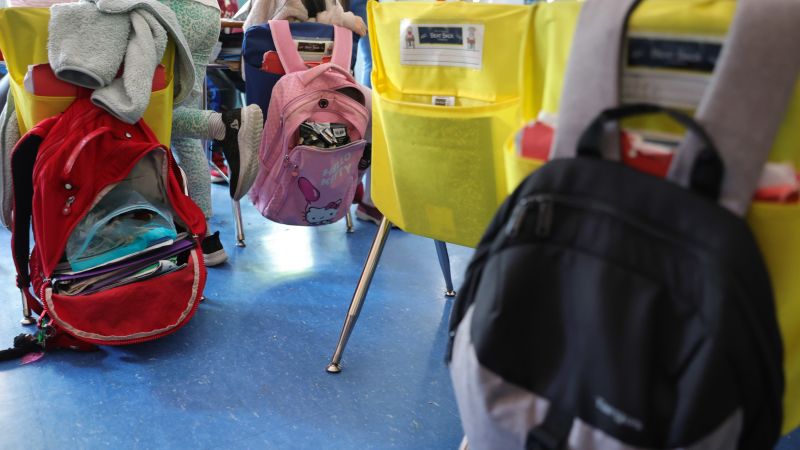Schools across the country are facing teacher and staff layoffs as districts prepare for the end of a pandemic aid package that provided a significant federal investment in K-12 education. The funds, which must be spent by September, are ending at a time when schools are also dealing with enrollment declines and inflation. Many districts are already planning layoffs for the upcoming school year, leading to concerns about the economic impact and challenges in showcasing improvements under the Biden administration.
In Missoula, Montana, the public school district is considering cutting teaching and administrative positions due to budget shortfalls. Enrollment has dropped by 5% since 2019, resulting in financial strain exacerbated by rising insurance and utility costs. Arlington, Texas, will be cutting 275 positions funded by pandemic aid, affecting staff providing after-school care, tutoring, and mental health services. Similarly, Hartford, Connecticut, is laying off 30 teachers and 79 other staff due to enrollment declines and a policy allowing residents to enroll in neighboring districts.
Congress authorized three rounds of pandemic aid for K-12 schools, totaling $190 billion between 2020 and 2021. The funding was used to help schools reopen, improve facilities, and address learning loss. Local school boards had flexibility in spending the funds, leading to the creation of thousands of new positions. However, as the funding ends, districts must now decide how to sustain these positions going forward and report on their spending to ensure transparency.
The potential for teacher layoffs is concerning given the current teacher shortage and declining public school enrollment. If staffing levels return to pre-pandemic levels, an estimated 384,000 full-time staff could face layoffs. The distribution of federal aid favors low-income districts, potentially impacting students of color and those in poverty-stricken areas the most. Layoffs often target recent hires, highlighting the need for performance-based criteria and protection for high-demand teachers like those in math and special education.
The economic impact of the pandemic aid cliff is evident in districts across the country, where layoffs are imminent as funds run out. The loss of federal funding, coupled with enrollment declines and rising costs, has forced districts to make tough decisions about staffing and budgeting. The end of pandemic aid highlights the challenges faced by schools in maintaining educational services and support for students, especially in areas with high poverty rates and diverse student populations. Moving forward, districts will need to find sustainable solutions to prevent further layoffs and ensure quality education for all students.


